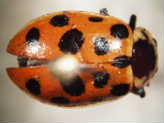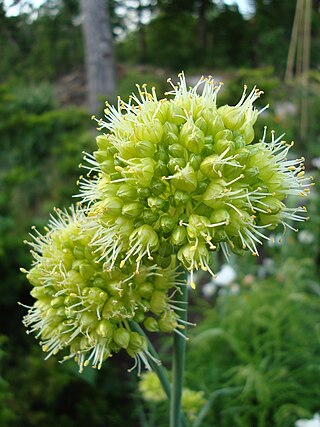
The Volga Germans are ethnic Germans who settled and historically lived along the Volga River in the region of southeastern European Russia around Saratov and close to Ukraine nearer to the south.

Leningrad Oblast is a federal subject of Russia. The oblast has an area of 84,500 square kilometres (32,600 sq mi) and a population of 2,000,997 ; up from 1,716,868 recorded in the 2010 Census. Leningrad Oblast is highly industrialized. Its administrative center and largest city is Gatchina.

Throughout Russian history famines, droughts and crop failures occurred on the territory of Russia, the Russian Empire and the USSR on more or less regular basis. From the beginning of the 11th to the end of the 16th century, on the territory of Russia for every century there were 8 crop failures, which were repeated every 13 years, sometimes causing prolonged famine in a significant territory. The causes of the famine were different, from natural and economic and political crises; for example, the Great Famine of 1931–1933, colloquially called the Holodomor, the cause of which was the collectivization policy in the USSR, which affected the territory of the Volga region in Russia, Ukraine and Kazakhstan.

Hippodamia tredecimpunctata, commonly known as the thirteen-spot ladybeetle, is a species of lady beetle.

Melilotus albus, known as honey clover, white melilot (UK), Bokhara clover (Australia), white sweetclover (US), and sweet clover, is a nitrogen-fixing legume in the family Fabaceae. Melilotus albus is considered a valuable honey plant and source of nectar and is often grown for forage. Its characteristic sweet odor, intensified by drying, is derived from coumarin.

Rheum is a genus of about 60 herbaceous perennial plants in the family Polygonaceae. Species are native to eastern Europe, southern and eastern temperate Asia, with a few reaching into northern tropical Asia. Rheum is cultivated in Europe and North America. The genus includes the vegetable rhubarb. The species have large somewhat triangular shaped leaves with long, fleshy petioles. The flowers are small, greenish-white to rose-red, and grouped in large compound leafy inflorescences. A number of cultivars of rhubarb have been domesticated both as medicinal plants and for human consumption. While the leaves are slightly toxic, the stalks are used in pies and other foods for their tart flavor.

The Volga Hydroelectric Station or Volga GES also known as the 22nd Congress of the CPSU Stalingrad/Volgograd Hydroelectric Power Station, is the largest hydroelectric station in Europe, and it is the last of the Volga-Kama Cascade of dams, immediately before the Volga River flows into the Caspian Sea. It was the largest powerstation in the world between 1960 and 1963. Today, it is operated by the electricity company RusHydro.

Vladimir Leontyevich Komarov was a Russian and Soviet botanist.

Alexander Nikolaevich Samoylovich was a Russian Orientalist-Turkologist who served as a member of the USSR Academy of Sciences (1929), Rector of the Leningrad Oriental Institute (1922–1925), academic secretary of the Humanities Branch of the USSR Academy of Sciences (1929–1933), and director of the Institute of Oriental Studies of the USSR Academy of Sciences (1934–1937). He was arrested by the NKVD in October 1937, and was executed on 13 February 1938.

The Caspian Sea is the world's largest inland body of water, often described as the world's largest lake and sometimes referred to as a full-fledged sea. An endorheic basin, it lies between Europe and Asia: east of the Caucasus, west of the broad steppe of Central Asia, south of the fertile plains of Southern Russia in Eastern Europe, and north of the mountainous Iranian Plateau. It covers a surface area of 371,000 km2 (143,000 sq mi), an area approximately equal to that of Japan, with a volume of 78,200 km3 (19,000 cu mi). It has a salinity of approximately 1.2%, about a third of the salinity of average seawater. It is bounded by Kazakhstan to the northeast, Russia to the northwest, Azerbaijan to the southwest, Iran to the south, and Turkmenistan to the southeast.

Melilotus indicus, sometimes incorrectly written Melilotus indica, is a yellow-flowered herb native to northern Africa, Europe and Asia, but naturalized throughout the rest of the world.

Evgenii Vladimirovich Wulff (1885–1941) was a Crimean Russian Soviet biologist, botanist and plant geographer.

Alexei Vasilievich Mozhaev was a Soviet Russian painter, graphic artist, and art teacher, lived and worked in Leningrad, a member of the Saint Petersburg Union of Artists, regarded as a representative of the Leningrad school of painting, most famous for his portrait painting.

Boris Konstantinovich Schischkin was a Russian botanist and from 1943 corresponding member of the Academy of Sciences of the USSR. His name was Russian: Борис Константинович Шишкин, with his surname sometimes transliterated as Shishkin.

Andrey Aleksandrovich Fedorov was a Soviet Russian biologist, botanist, taxonomist and phytogeographer, who was from 1970 a corresponding member of the Academy of Sciences of the USSR. He was the brother of the botanist Alexander Fedorov (1906–1982).

Yuri Aleksandrovich Orlov — was a Russian and Soviet zoologist and paleontologist. Academician of the Academy of Sciences of the Soviet Union.

Allium obliquum, common name lop-sided onion or twisted-leaf onion, is a Eurasian species of wild onion with a range extending from Romania to Mongolia. It is also widely cultivated elsewhere as an ornamental.

Amethystea is a genus of plants in the family Lamiaceae, first described for modern science by Linnaeus in 1753. It has only one known species, Amethystea caerulea, commonly known as blue amethystea. It is native to China, Japan, Korea, Central Asia, and parts of Russia.
Mikhail Georgievich Khudyakov – is a Soviet archaeologist, researcher of history and culture of the Volga basin peoples. His main works are on the history of Tatars, Volga Bulgaria, archeology of Kazan.
Ekaterina Georgiewna Reineke Czerniakowska (1892–1942) was a Soviet botanist and taxonomist of higher plants.


















